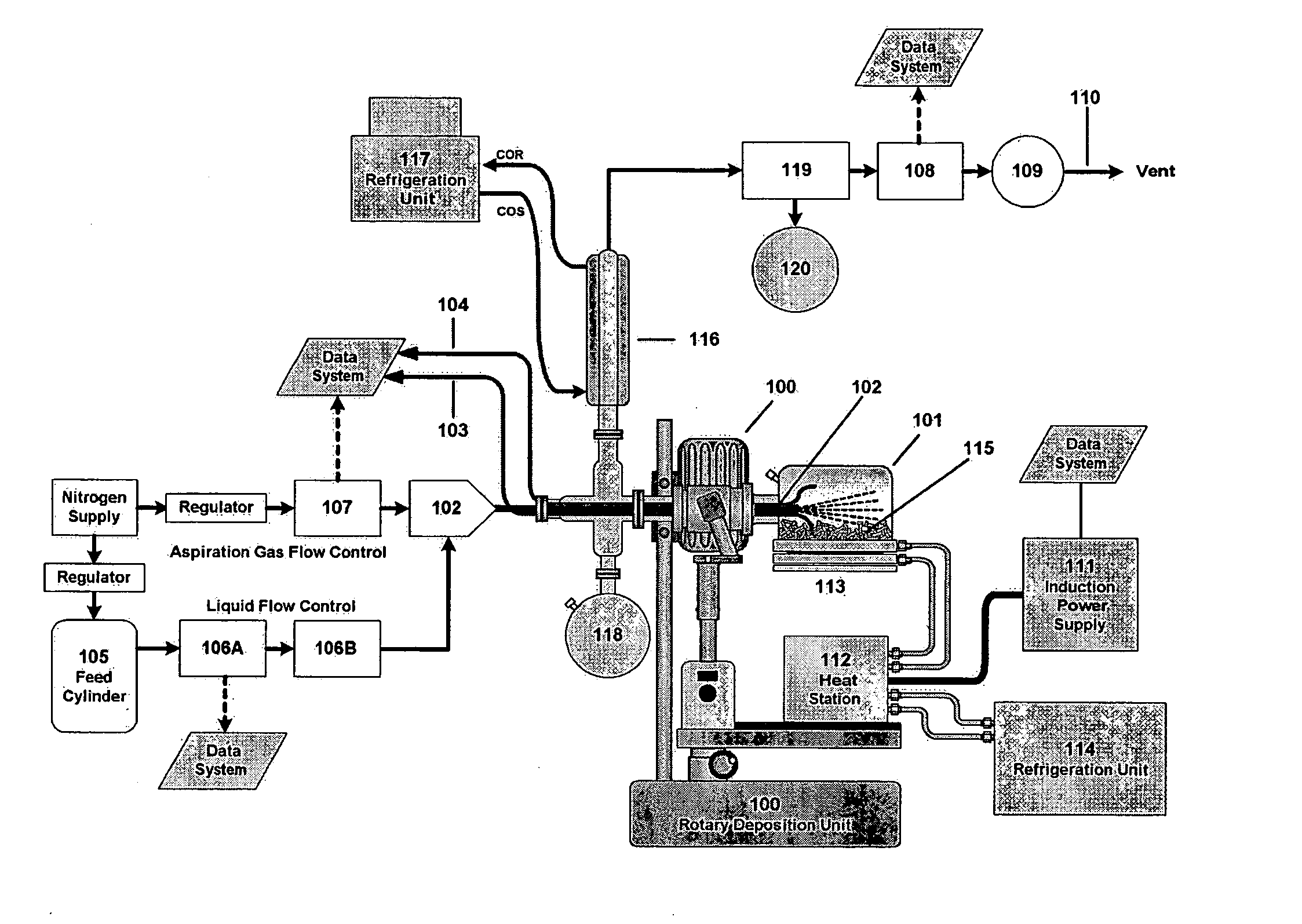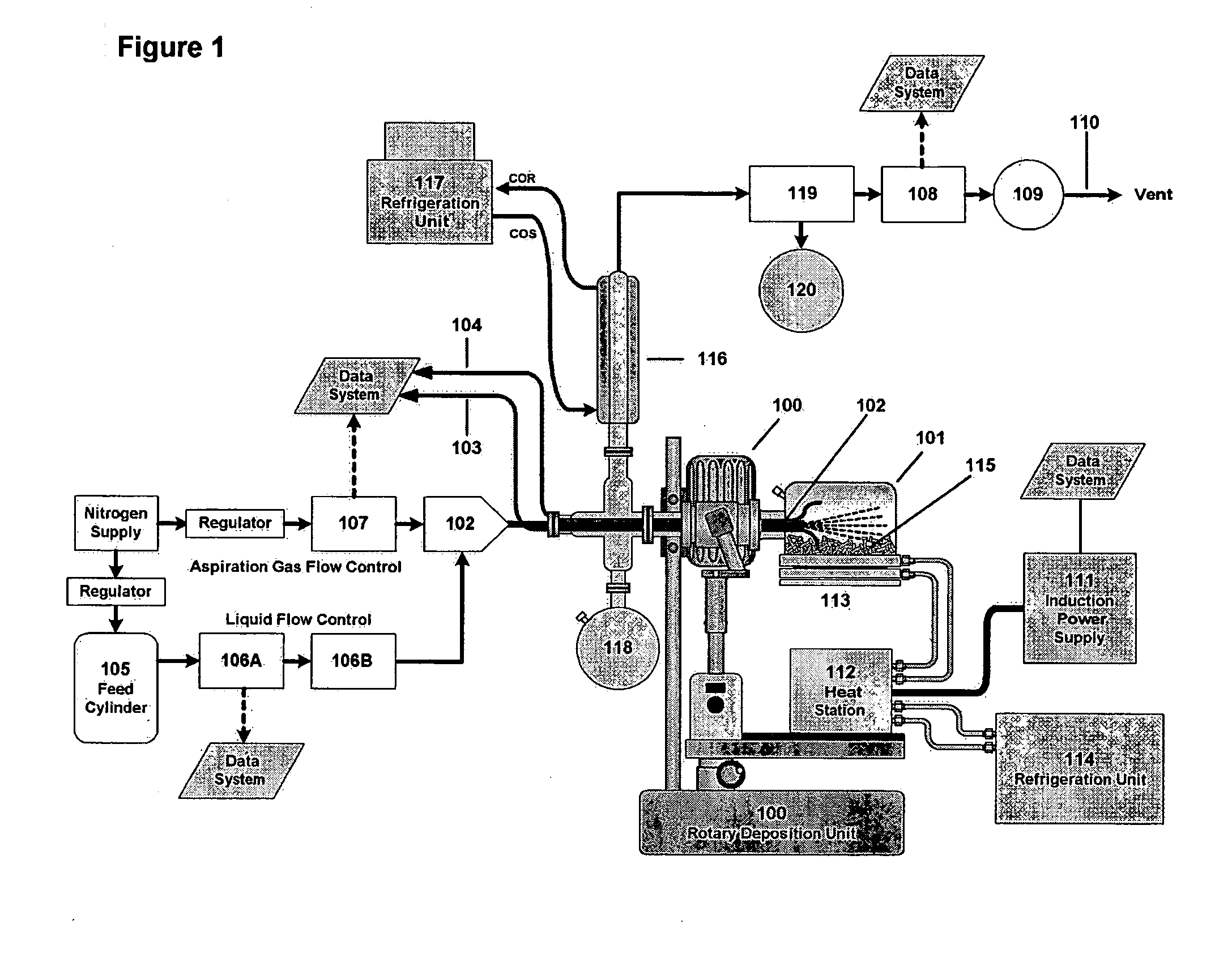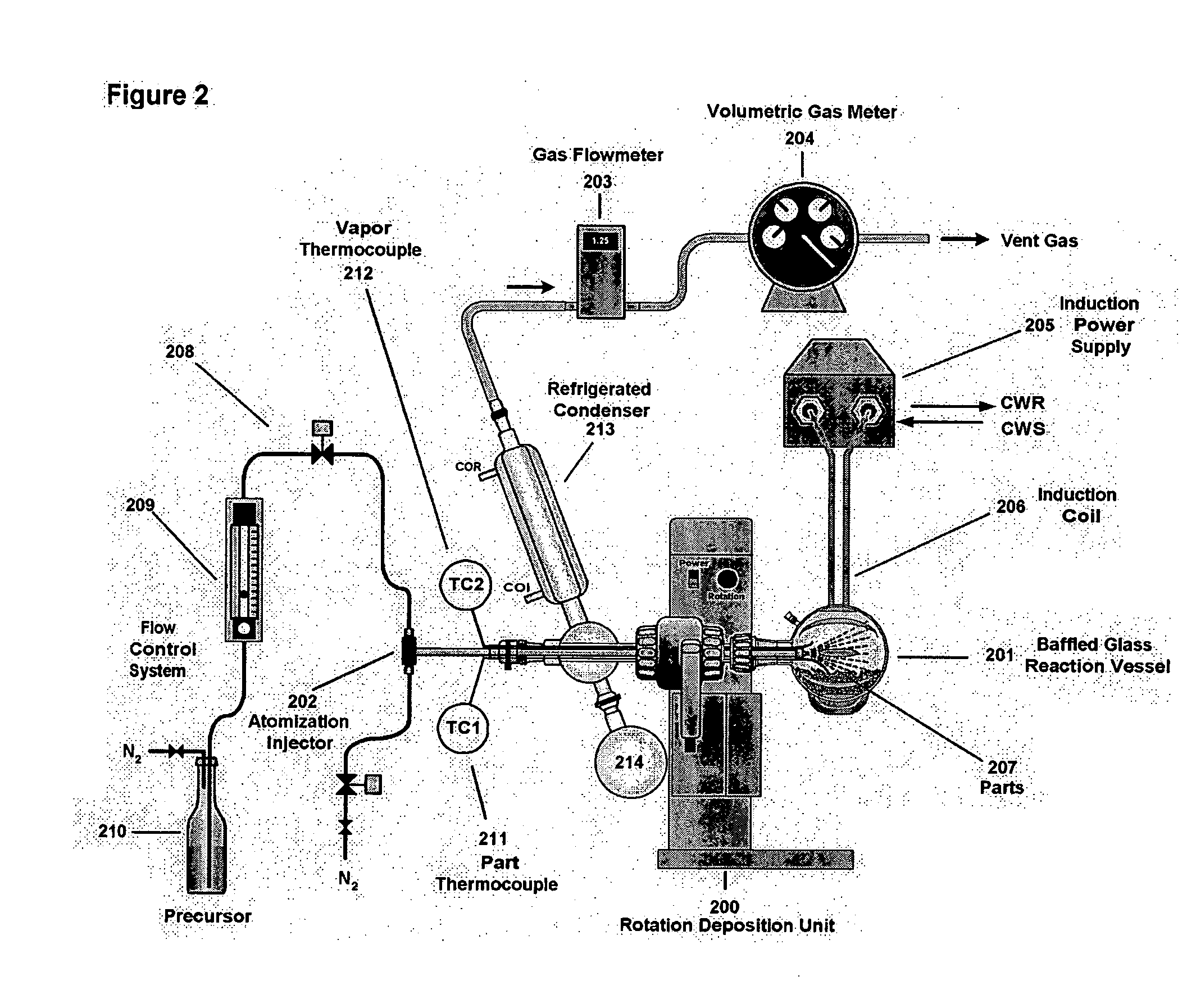Metallization of substrate(s) by a liquid/vapor deposition process
a technology of liquid/vapor deposition and metalization of substrates, applied in the field of metalic coatings, can solve the problems of difficult and difficult cvd method of deposited metallic thin films for coatings, and the inability to economically attractively apply such coatings,
- Summary
- Abstract
- Description
- Claims
- Application Information
AI Technical Summary
Benefits of technology
Problems solved by technology
Method used
Image
Examples
example 1
Six hundred and twenty M6 indented hex flange bolts weighing a total of 5055 g and having a total surface area of 7576 cm2 were placed into the baffled 10-liter cylindrical reaction vessel (101) shown in FIG. 1. The bolts had been thoroughly cleaned and dried to remove external oils and had been glass bead blasted to remove scale and oxide. The reaction vessel (101) was fixed to the rotating deposition system (100), and the system was flushed thoroughly with nitrogen to remove residual oxygen through the aspiration probe (102). The reaction system was equipped with thermocouples TC1 (103) for measuring part temperature and TC2 (104) for measuring vapor temperature.
Prior to the start of the run, liquid triisobutylaluminum (TIBAL) from feed cylinder (105) was set up to feed at an initial rate of 19.5 g per minute as an atomized mist into the reaction zone through a calibrated rotometer (106A) and flow controller (106B). Atomization was provided by a coaxial aspiration probe (102) t...
example 2
Using equipment and procedures similar to those described in Example 1, in this run, the aspiration gas flow was lowered to 5.5 L / min, and the part temperature was allowed to reach a maximum of 315° C. toward the end of the run. No attempt was made to maintain the vapor temperature inside the transport space below the decomposition temperature of the precursor. TIBAL feed was started at 19 g / min for the first thirteen minutes of the run. Within thirty seconds after TIBAL was introduced, all of the parts had taken on a uniform silver appearance. At eight minutes into the run and at a vapor temperature of 232° C., a light gray fog was first observed inside the vessel. The parts began to lose their opalescent silver appearance but no visible dust was observed to be forming on the walls of the reactor, and liquid precursor was still present on the reactor wall. At thirteen minutes into the run, the TIBAL feed rate was lowered to 11.5 g / min. For the next five minutes, the parts became d...
example 3
Using equipment and procedures similar to those described in Example 1, a run was conducted to determine conditions required to generate high-quality aluminum layers using triethylaluminum (TEAL) as the precursor. As shown in Table 2, 222 parts with a total surface area of 3972 cm2 were heated to a range from 322-366° C. TEAL was delivered at 8-9 g / min by atomization in a stream of nitrogen at 6 L / min. At these conditions, the observed vapor temperature ranged from 247-268° C. The initial aluminum deposition was matte silver, but soon afterwards, black dust was observed to be forming and collecting on the walls and on the parts. Little if any excess TEAL was observed as a liquid film on the wall of the flask. The run was terminated after fourteen minutes. A layer thickness of 8.0 μm was computed by average weight gain with the rate of deposition computed at 0.57 μm / min. When examined under a microscope, the layers were quite dark, porous, and contaminated with black dust. Rubbing t...
PUM
| Property | Measurement | Unit |
|---|---|---|
| temperature | aaaaa | aaaaa |
| thick | aaaaa | aaaaa |
| boiling points | aaaaa | aaaaa |
Abstract
Description
Claims
Application Information
 Login to View More
Login to View More - R&D
- Intellectual Property
- Life Sciences
- Materials
- Tech Scout
- Unparalleled Data Quality
- Higher Quality Content
- 60% Fewer Hallucinations
Browse by: Latest US Patents, China's latest patents, Technical Efficacy Thesaurus, Application Domain, Technology Topic, Popular Technical Reports.
© 2025 PatSnap. All rights reserved.Legal|Privacy policy|Modern Slavery Act Transparency Statement|Sitemap|About US| Contact US: help@patsnap.com



